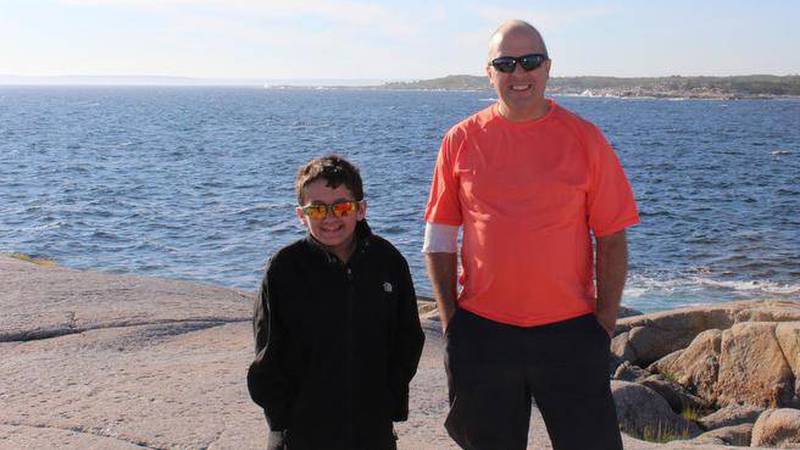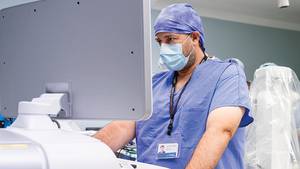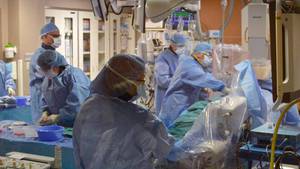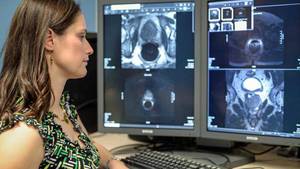When David Boudreau found a golf ball-sized lump under his jaw while shaving one morning, he had no idea it was malignant and that he would become one of the first patients to receive an advanced radiation treatment at the QEII Health Sciences Centre. The QEII is the first in Canada to deliver the bone marrow treatment using a technique called Volumetric Arc Therapy (VMAT).
David had never heard of VMAT when his doctor told him it would be his best option for survival and would leave him with fewer complications and side effects, such as painful sores in his mouth.
“I was nervous, but I figured I had to have confidence in the doctors,” says the Bouctouche, N.B. resident, who received the treatment in March 2016, followed by a bone marrow transplant.
David was an active 44-year-old father who coached hockey and karate when he was diagnosed in 2010 with Follicular lymphoma, the second most common type of non-Hodgkin lymphoma.
Like David, people with certain types of cancers or other diseases including leukemia, lymphomas and multiple myeloma can have VMAT as part of their treatment. It is administered days before a bone marrow transplant takes place. An advanced form of total body irradiation, VMAT allows doctors to deliver targeted radiation to the major marrow sites where cancer cells are. Marrow is sponge-like tissue found inside bones.
What makes VMAT different and effective is that it targets the radiation dosage to the skeletal bone structure, helping to reduce radiation exposure to healthy organs, life-threatening complications and painful side effects, says Dr. Amanda Cherpak, a medical physicist at the Nova Scotia Cancer Centre at the QEII.
“The entire skeleton is what we are treating,” she says. “Previously we would radiate the entire body head to toe to kill the cancer cells.”
Radiation is given to not only kill the cancer cells, but also into the bone marrow to suppress the immune system so the patient is more likely to accept the bone marrow transplant, explains Dr. Cherpak.
VMAT delivers the same dose of radiation to the marrow but can lower the dose to the organs by up to 50 per cent, she says. When radiation was previously given to the entire body it would hit the patient’s entire system and would result in complications to organs like the lungs and liver, and cause side effects ranging from nausea and diarrhea to mouth sores.
“There is evidence out there that you can treat the marrow and spare the rest of the healthy organs,” says Dr. Cherpak.
Less than three months after David had received an early Christmas present — a suitable bone marrow donor— he was admitted to the QEII to receive three days of VMAT treatment, followed by the transplant. Coming from an unrelated donor, doctors gave him a 60 per cent chance of success.
Using newer equipment and more sophisticated treatment techniques, David was given radiation from 360 degrees around his body, allowing for greater control of the prescription dose so that it could go to precisely targeted areas.
The QEII was able to introduce the VMAT treatment thanks in part to the QEII Foundation’s successful Cancer Never Waits fundraising campaign. Aimed at reducing wait times, improving treatment options and saving lives, donors raised more than $4-million to purchase new equipment and fund the building of the James and Edna Claydon Radiation Treatment Clinic.
While his recovery has been slow, David is grateful for each day he is at home with his family.
“I’m getting stronger every day,” he says. “I’m satisfied with everything the QEII did for me.”








